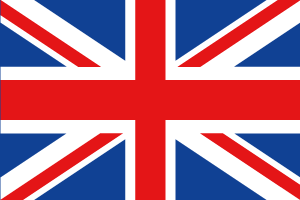Bladder Health
Living With Interstitial Cystitis.
By Anna Sawkins
Feb 23, 2022

Interstitial Cystitis, also known as Bladder Pain Syndrome (BPS), Painful Bladder Syndrome (PBS), Overactive Bladder Syndrome (OBS) or hypersensitive bladder syndrome (HBS), is a name that is given, amongst others to describe the frequency, urgency, pressure and/or bladder pain that some people experience on an ongoing basis for many years. It can be ulcerative and non-ulcerative, depending on the presence or absence of ulcerations in the bladder lining. Interstitial Cystitis shares many of the same symptoms as cystitis, so treatment methods are generally the same for both conditions.
American Guidelines (2009) describe IC as:
A condition that results in an unpleasant sensation perceived to be related to the urinary bladder, associated with lower urinary tract symptoms of more than 6 weeks duration, in the absence of infection or other identifiable causes.
Diagnosis
- Your Doctor may request a urine sample which will be analyzed for signs of a urinary tract infection. Request a thorough bacterial analysis of your urine from your Doctor to determine if there is a bacterial cause. Bacterial identification can often lead to positive outcomes.
- Your Doctor may insert a thin tube with a tiny camera called a cystoscope, through the urethra to examine the inside the bladder.
- Your Doctor may take a sample of tissue, known as a biopsy, for further analysis and to rule out other conditions. This procedure is usually done under anesthesia.
Symptoms
- Pain or pressure in the bladder, often just above the pubic bone.
- A feeling like sharp needles in the bladder.
- A feeling of unexplained irritation in the bladder.
- Foul smelling urine.
- Sexual intercourse feels painful.
- Frequent urination day and night.
- Prolonged retention of urine.
- Decreased bladder capacity.
- Feelings of pressure, pain, and tenderness around the bladder and pelvis.
- Discomfort or pain in the genitals.
- Compare with cystitis symptoms and other related conditions.
The symptoms of Interstitial Cystitis vary greatly from one person to another but share some similarities to the symptoms of a urinary tract infection.
When a patient presents with chronic cystitis and the bladder is examined, small wounds will be observed; these are called Petechial hemorrhages and it is then that the ulcerative or non-ulcerative condition is diagnosed.
Symptoms vary greatly from person to person, but all include an urgent need to urinate (urgency), a frequent need to urinate (frequency) and, for some, pressure or pelvic pain. People with severe cases may urinate as many as 60 times a day, including frequent night-time urination (nocturia).
The University of Maryland (led by Susan Keay) isolated a substance found almost exclusively in the urine of people with Interstitial Cystitis. They have named the substance the antiproliferative factor (APF), because it appears to block the normal growth of the cells that line the inside wall of the bladder. This explains why it may take longer for an IC sufferer to heal as opposed to a regular cystitis sufferer.
Causes
A huge number of bladder problems, ranging from painless but frequent urination, through to severely crippling and debilitating bladder pain, are labelled under the general heading of 'Interstitial Cystitis'.
It's a non malignant, non infective condition which may be associated with changes that are apparent when you look at the bladder, but sometimes the bladder may appear absolutely normal, [although] the patient may be crippled with discomfort.
Dr Helen O'Connell, consultant urologist - Royal Melbourne Hospital.
Other possible causes of the symptoms found in Interstitial Cystitis include physical abnormalities such as prolapse of the bladder, vaginal infections, urinary tract infections or disorders, endometriosis, bladder cancer, sexually transmitted diseases, and kidney stones. Tests may be necessary to rule out these causes.
When blockages, physical abnormalities, and symptom-causing diseases are ruled out, the absence of infection, when combined with pain or frequent urination, is the over-riding factor that can lead to a diagnosis of Interstitial Cystitis.
Triggers
Certain foods such as tomatoes, spices, alcohol, chocolate, caffeinated and citrus beverages and high-acid foods may add to bladder irritation and inflammation. Exacerbated symptoms may also occur after consuming products containing artificial sweeteners. If you believe that your Interstitial Cystitis is related to your diet, try keeping a diary of the foods you intake and look for a correlation to symptoms. Or try cutting out all of the above, and gradually introducing them to identify any triggers.
Unfortunately, the triggers are not always identifiable. Interstitial Cystitis can affect otherwise healthy individuals for no apparent reason. However, it is likely that diet and lifestyle do play a part, and it has recently been accepted that previous antibiotic use for one or more bladder infections may destroy E. coli, but leave fragments of the bacteria bio-molecularly attached to lining of bladder and urinary tract. This can cause long-term irritation of the bladder, making it painful to fill the bladder completely, leading to frequent urination, gradual shrinking of the bladder, and the beginning of a cycle that can be very difficult to break.
Treatments
- D'Mannose can help to detach bacterial fragments if they are present.
- Dietary changes may help. For example, alkalising urine through food choices.
- Antibiotics offer temporary relief to some sufferers.
- Bladder training to stretch the bladder.
- Stress reduction, and low-impact exercise are said to reduce symptoms.
Surgical Interventions
Internal Pouch: Urine is diverted to a pouch, constructed from a bowel segment, that is placed inside the abdomen. This is emptied by self-catheterization through a stoma (surgical hole in the abdomen).
Orthotopic Diversion: The bladder is removed and a new bladder, formed from a bowel segment, replaces the damaged bladder. Multiple possible setbacks include bladder stone formation, easier perforation, incontinence, continuing infections or Interstitial Cystitis, and increased mucus production.
Augmentation Cystoplasty: Removal of part or most of the bladder, and replacment with bowel tissue.
Urinary Diversion: A short section of bowel and the ureters is used to bypass the bladder into an external collection bag. May or may not result in the elimination of pain.
Conclusion
Interstitial Cystitis is a very painful and difficult problem, and while we know that D-Mannose cannot completely solve the problem for all IC/PBS sufferers, it may offer some support.
 Free Shipping on orders $110+ AUD
Free Shipping on orders $110+ AUD
 Worldwide Delivery Available
Worldwide Delivery Available
 Rated 4.9 out of 5 on Trustpilot
Rated 4.9 out of 5 on Trustpilot

















